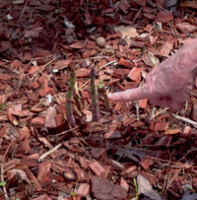Asparagus: Only for a Patient Gardener
 **(This Post is written by my friend, Mary. More info about her at the end.)** Asparagus is one of America’s favorite early spring vegetables and is very easy to grow . . . if you are patient. It takes 2 to 3 years to establish but the plant can be productive up to 20 years, so it is worth the wait. This advice comes from a gardener who has started three asparagus beds and maintained a well-established bed in a family burial plot . . . an entry for another blog topic.
**(This Post is written by my friend, Mary. More info about her at the end.)** Asparagus is one of America’s favorite early spring vegetables and is very easy to grow . . . if you are patient. It takes 2 to 3 years to establish but the plant can be productive up to 20 years, so it is worth the wait. This advice comes from a gardener who has started three asparagus beds and maintained a well-established bed in a family burial plot . . . an entry for another blog topic.
Asparagus is best adapted to regions with cool winters, but does well here in Texas zones . . . just may show up early (end of February early March). Tips for planting, growing and harvesting asparagus are:
- Plant asparagus in early spring as soon as soil can be worked. Plant crowns or roots – readily available in most big box nurseries.
- A dedicated bed is needed as asparagus will spread and dominate the specified area.
- Preferred soil is sandy loam (but have seen it grow well in rock of the Texas Hill Country) prepared with compost, manure or potting soil.
- Trench soil 6 inches wide and 6inches deep in a well-drained area (asparagus does well in raised beds)
- DO NOT harvest the spears in the first or second year !!!!!!!!!!! THUS THE “PATIENT GARDENER” ! Allow the spears to grow into fern and cut down dead foliage in late fall then dress with compost.
- In the third year and hence harvest only the spears thicker than a pencil and as long as 6 inches for a period of about three weeks to a month.
- After the harvest, allow the ferns to grow to replenish the nutrients and promote root growth for the next year’s production . Cut down dead foliage in late fall/early winter then dress with compost.
Some informal observations:
- Asparagus seems to like a saline soil, so dumping your homemade ice cream salt water makes the spears sweet and crisp and controls weeds and grass in the bed.
- Asparagus grows wild along saline waterways.
- Asparagus develops an attractive ornamental fern during the summer months in accidental flower beds.
BE PATIENT AND FEEL FREE TO CONSULT SOURCES WELL BEYOND THE EXPERIENCE OF THIS GARDENER.
Posted By My Friend, Mary, The Patient Gardener
Mary is a good friend who loves plants, animals, fishing, and history. She is quite the traveler with her husband and Cairn terrier, Sir Walter, and is an intrepid mariner, usually navigating Alaskan and Canadian waters for salmon. I hope she will share a post on fishing for salmon as well as her canning techniques.
This spring, she becomes a “looper”. Circumnavigation of Eastern North America by water is known as The Great Loop and varies from 5000-7000 miles. Loopers travel through intercoastal canals, rivers, and lakes from the Gulf Coast, up the Eastern coast, through the Erie Canal and St. Lawrence River, and Great Lakes down the Illinois and Mississippi Rivers back to the Gulf Coast. Quite an adventure, and, again, hope she will send us a few posts along the way. We need to know more about loopers!
 Ben was never a gardener himself, but was very interested in horticulture. He arranged for the exchange of seeds between French and American gardeners and introduced rhubarb, cabbage turnip or kohlrabi to Americans. It is believed that the young Ben was adverse to killing animals for food (As a thrift enthusiast, he also knew that vegetables cost less than meat), but after exposure to the culinary arts in France, he expanded his diet to include meat as well as vegetables.
Ben was never a gardener himself, but was very interested in horticulture. He arranged for the exchange of seeds between French and American gardeners and introduced rhubarb, cabbage turnip or kohlrabi to Americans. It is believed that the young Ben was adverse to killing animals for food (As a thrift enthusiast, he also knew that vegetables cost less than meat), but after exposure to the culinary arts in France, he expanded his diet to include meat as well as vegetables.



